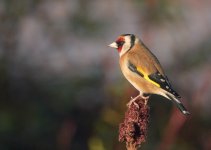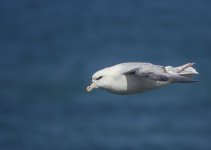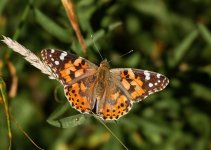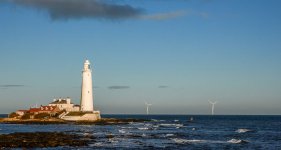PaulCountyDurham
Well-known member

Hi all,
Any advice appreciated.
I'm looking to buy a new camera, not just yet, maybe around the end of June; but I'm beginning my research. I currently have an FZ330 which has been an absolute bargain in terms of introducing me to cameras and it's more than exceeded my expectations. There are, however, certain things it can't do, which is not a fault of the camera but more a case of what I want to do with a camera now that I have some experience.
The main things I want in a camera are as follows: I want to take good quality pictures of birds in their habitat, such as streams and the like, with a large number f stop for obvious reasons; I really don't want to be lugging heavy equipment around as I'm quite happy with a camera 'round my neck that gives me more flexibility; I would also like a very respectable zoom feature which enables me to take sharp shots. The FZ330 simply can't get enough light in at a large number f stop.
As an addition but not as important as the aforementioned, I'd quite like a camera that allows me to take decent pictures at night, if possible.
When I bought the FZ330, I had no idea whether or not I'd be able to use it and so I deliberately went for something that was deemed to be a good budget, introduction camera. This time I plan on having this camera for a good few years and I'm confident I'll make the best of it, meaning I'm happy to pay for a good quality camera. Anywhere up to £1,500.
I'm thinking that, based on what I want, it has to be a bridge camera and my best bet is the Sony RX10 mark 4. Is there a better option based upon what I'm looking to do with a camera? And, I'm hoping I'm not going to have to use some sort of extender with this camera: is that a realistic assumption?
Thanks,
Paul
Any advice appreciated.
I'm looking to buy a new camera, not just yet, maybe around the end of June; but I'm beginning my research. I currently have an FZ330 which has been an absolute bargain in terms of introducing me to cameras and it's more than exceeded my expectations. There are, however, certain things it can't do, which is not a fault of the camera but more a case of what I want to do with a camera now that I have some experience.
The main things I want in a camera are as follows: I want to take good quality pictures of birds in their habitat, such as streams and the like, with a large number f stop for obvious reasons; I really don't want to be lugging heavy equipment around as I'm quite happy with a camera 'round my neck that gives me more flexibility; I would also like a very respectable zoom feature which enables me to take sharp shots. The FZ330 simply can't get enough light in at a large number f stop.
As an addition but not as important as the aforementioned, I'd quite like a camera that allows me to take decent pictures at night, if possible.
When I bought the FZ330, I had no idea whether or not I'd be able to use it and so I deliberately went for something that was deemed to be a good budget, introduction camera. This time I plan on having this camera for a good few years and I'm confident I'll make the best of it, meaning I'm happy to pay for a good quality camera. Anywhere up to £1,500.
I'm thinking that, based on what I want, it has to be a bridge camera and my best bet is the Sony RX10 mark 4. Is there a better option based upon what I'm looking to do with a camera? And, I'm hoping I'm not going to have to use some sort of extender with this camera: is that a realistic assumption?
Thanks,
Paul











